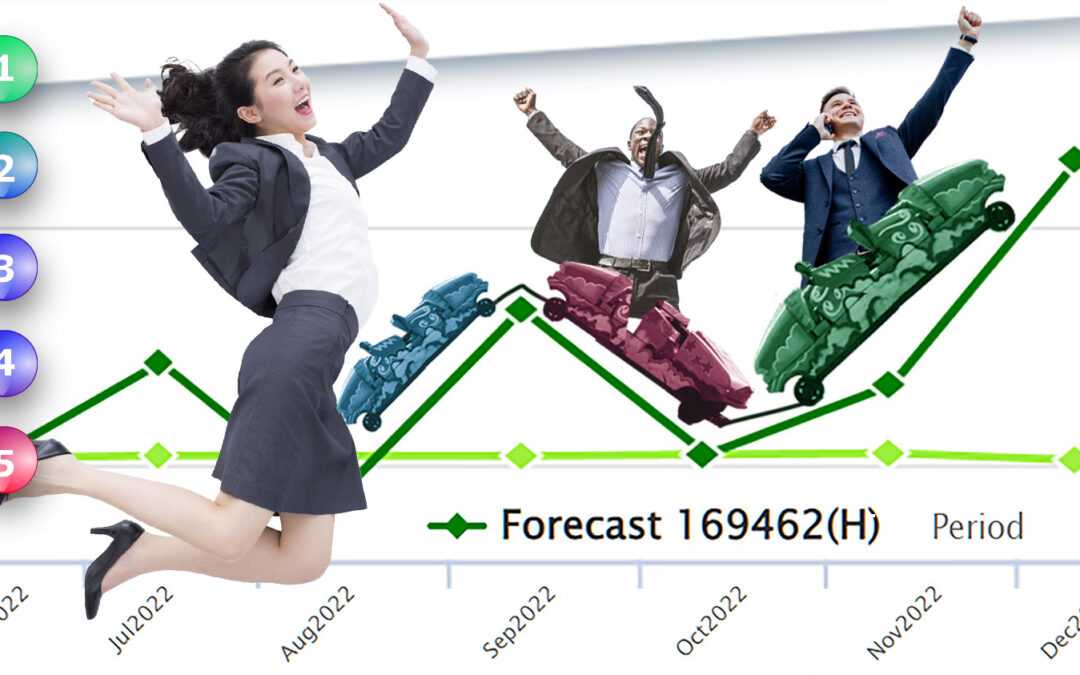In Smart Software’s forty-plus years of providing forecasting software, we’ve met many people who find themselves, perhaps surprisingly, becoming demand forecasters. This blog is aimed primarily at those fortunate individuals who are about to start this adventure (though seasoned pros may enjoy the refresher).
Welcome to the field! Good forecasting can make a big difference to your company’s performance, whether you are forecasting to support sales, marketing, production, inventory, or finance.
There is a lot of math and statistics underlying demand forecasting methods, so your assignment suggests that you are not one of those math-phobic people who would rather be poets. Luckily, if you are feeling a bit shaky and not yet healed from your high school geometry class, a lot of the math is built into forecasting software, so your first job is to leave the math for later while you get a view of the big picture. It is indeed a big picture, but let’s isolate few of the ideas that will most help you succeed.
- Demand Forecasting is a team sport. Even in a small company, the demand planner is part of a team, with some folks bringing the data, some bringing the tech, and some bringing the business judgment. In a well-run business, your job will never be to simply feed some data into a program and send out a forecast report. Many companies have adopted a process called Sales and Operations Planning (S&OP) in which your forecast will be used to kick off a meeting to make certain judgments (e.g., Should we assume this trend will continue? Will it be worse to under-forecast or over-forecast?) and to blend extra information into the final forecast (e.g., sales force input, business intelligence on competitors’ moves, promotions). The implication for you is that your skills at listening and communicating will be important to your success.
- Statistical Forecasting engines need good fuel. Historical data is the fuel used by statistical forecasting programs, so bad or missing or delayed data can degrade your work product. Your job will implicitly include a quality control aspect, and you must keep a keen eye on the data that are supplied to you. Along the way, it is a good idea to make the IT people your friends.
- Your name is on your forecasts. Like it or not, if I send forecasts up the chain of command, they get labeled as “Tom’s forecasts.” I must be prepared to own those numbers. To earn my seat at the table, I must be able to explain what data my forecasts were based on, how they were calculated, why I used Method A instead of Method B to do the calculations, and especially how firm or squishy they are. Here honesty is important. No forecast can reasonably be expected to be perfectly accurate, but not all managers can be expected to be perfectly reasonable. If you’re unlucky, your management will think that your reports of forecast uncertainty suggest either ignorance or incompetence. In truth, they indicate professionalism. I have no useful advice about how best to manage such managers, but I can warn you about them. It’s up to you to educate those who use your forecasts. The best managers will appreciate that.
- Leave your spreadsheets behind. It’s not uncommon for someone to be promoted to forecaster because they were great with Excel. Unless you are with an unusually small company, the scale of modern corporate forecasting overwhelms what you can handle with spreadsheets. The increasing speed of business compounds the problem: the sleepy tempo of annual and quarterly planning meetings is rapidly giving way to weekly or even daily re-forecasts as conditions change. So, be prepared to lean on a professional vendor of modern, scalable cloud-based demand planning and statistical forecasting software for training and support.
- Think visually. It will be very useful, both in deciding how to generate demand forecasts and in presenting them to management, so take advantage of the visualization capabilities built into forecasting software. As I noted above, in today’s high-frequency business world, the data you work with can change rapidly, so what you did last month may not be the right thing to do this month. Literally keep an eye on your data by making simple plots, like “timeplots” that show things like trend or seasonality or (especially) changes in trend or seasonality or anomalies that must be dealt with. Similarly, supplementing tables of forecasts with graphs comparing current forecasts to prior forecasts to actuals can be very helpful in an S&OP process. For example, timeplots showing past values, forecasted values, and “forecast intervals” indicating the objective uncertainty in the forecasts provide a solid basis for your team to fully appreciate the message in your forecasts.
That’s enough for now. As a person who’s taught in universities for half a century, I’m inclined to start into the statistical side of forecasting, but I’ll save that for another time. The five tips above should be helpful to you as you grow into a key part of your corporate planning team. Welcome to the game!







